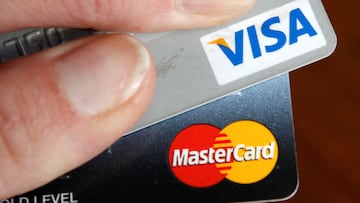Federal Reserve warns that credit card delinquency is rising rapidly as household savings plummet
New data from the Federal Reserve shows that credit card delinquency continues to rise in the US.


The Federal Reserve reported earlier this year that in late 2023, credit card delinquency rose above three percent for the first time since 2012. Credit card delinquency is one indicator of economic health and household well-being. Increases in delinquency typically indicate periods of economic hardship. During the Great Recession, credit card delinquency had surpassed nine percent as workers lost their jobs and looked towards their credit cards to cover basic costs in an unstable economy.
This week, the Federal Reserve Bank of St. Louis has released a new blog highlighting their concerns with growing credit card delinquency and the threats it creates for the economic well-being of households and the health of the economy. For an individual to enter a period of financial distress, they must have an “account that is 30 days or more past due, excluding severe derogatory debt (more than 120 days past due).” Looking at credit card debt in particular, the Fed found that financial distress was higher than pre-pandemic levels, with 3.10 percent of households finding themselves in this position. This rate is much lower than the forty-eight percent that carry a balance, even for a short period, each month on their credit card.
The Fed’s analysis also reveals a stark geographical disparity in delinquency rates. The poorest ten percent of zip codes, as per the bank’s analysis, are experiencing delinquency rates that are at 94.8%, 93.7%, and 93.6% of their peaks, respectively, for the period under examination (1999-2024). This highlights the unequal burden of credit card delinquency, with certain areas disproportionately affected.
What is driving credit card delinquency?
The research attempts to understand why the delinquency rates have impacted poor households rapidly and why delinquency is increasing across the country. It points to the evisceration of pandemic savings. During the pandemic, the federal government established programs that helped many households increase their savings. Personal savings soared to nearly $6 trillion in 2021, whereas in March of this year, the figure stood at $671 billion. In parallel, the personal savings rate has also fluctuated and has hit 3.2 percent, the lowest level recorded in years.
Inflation compounded the issue by cutting into purchasing power, forcing households to use more of their savings to maintain their consumption patterns.
Related stories
Additionally, income inequality contributes to why certain groups fare much more when economic conditions worsen. Considering all the wealth in the United States, only the bottom half of households control only 2.5 percent of it. This figure is higher than in 2019 when these households controlled 1.6 percent, but it declines as delinquency increases.
While, the Dow Jones hitting 40,000 points may be a sign of strong economic growth, the financial stress of households is an important indicator that elected officials would be wise to keep tabs on, especially during an election year.
Complete your personal details to comment